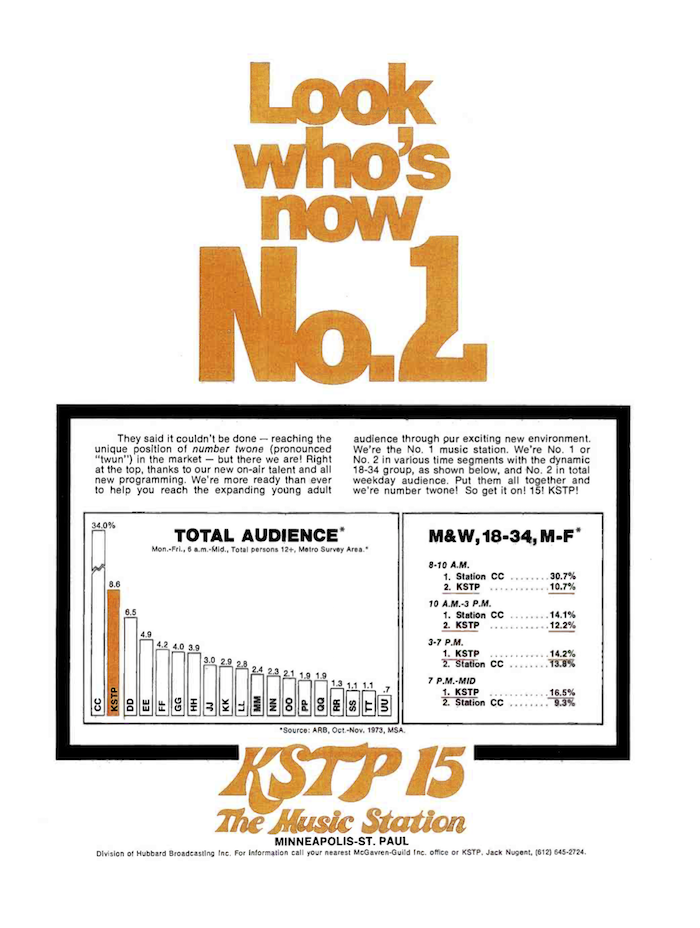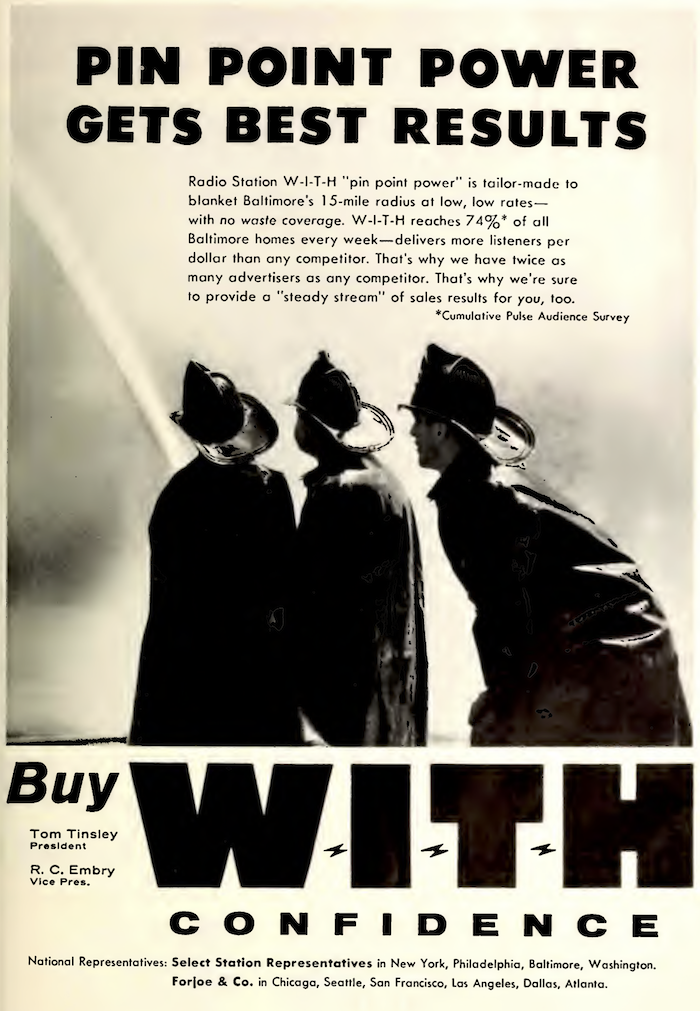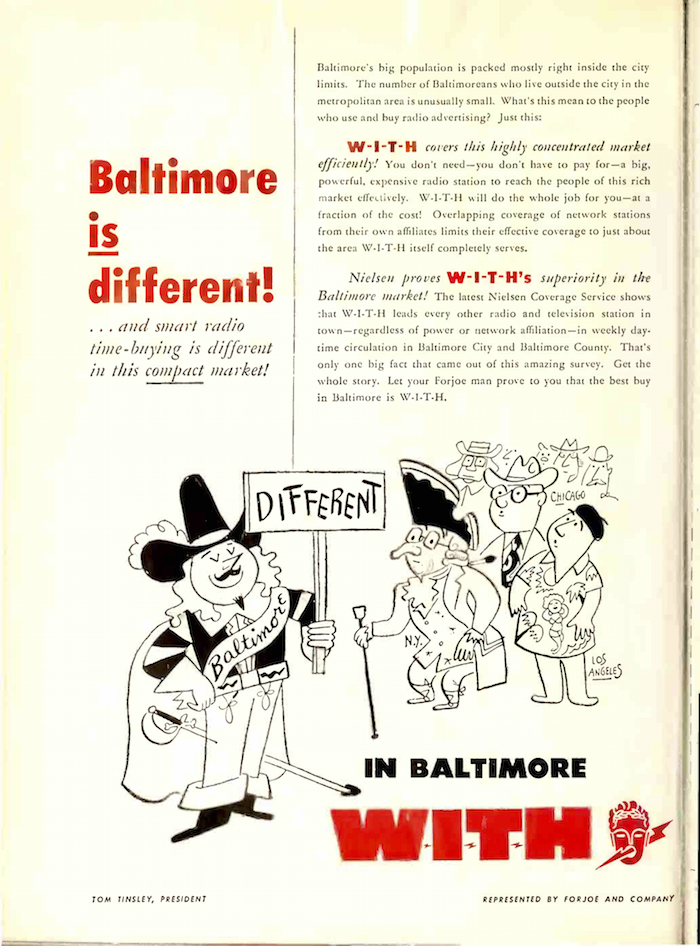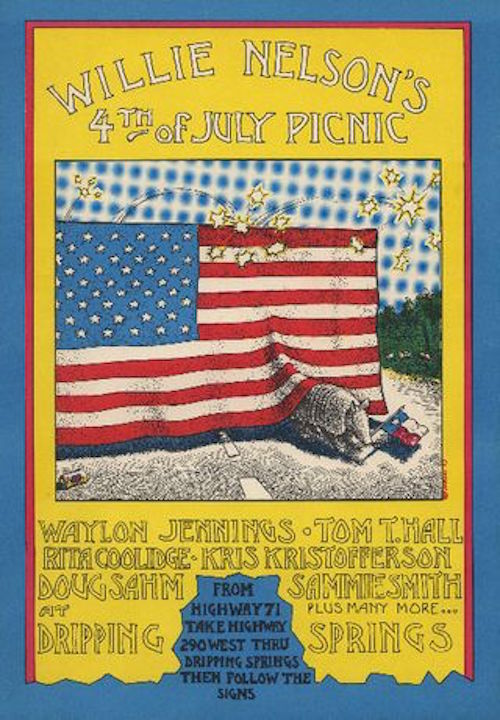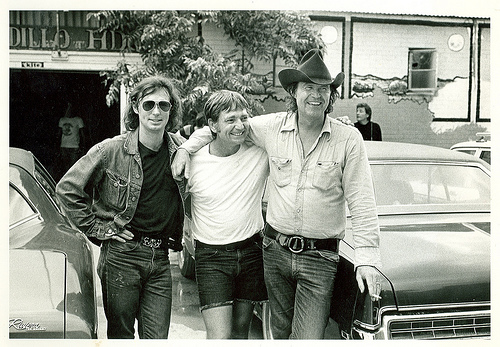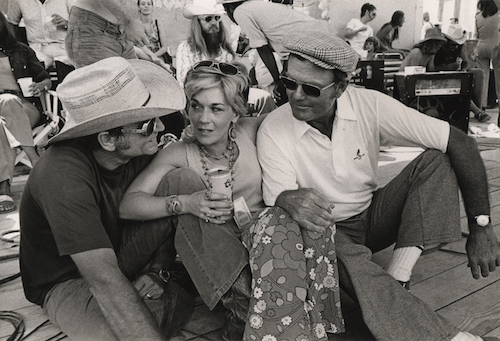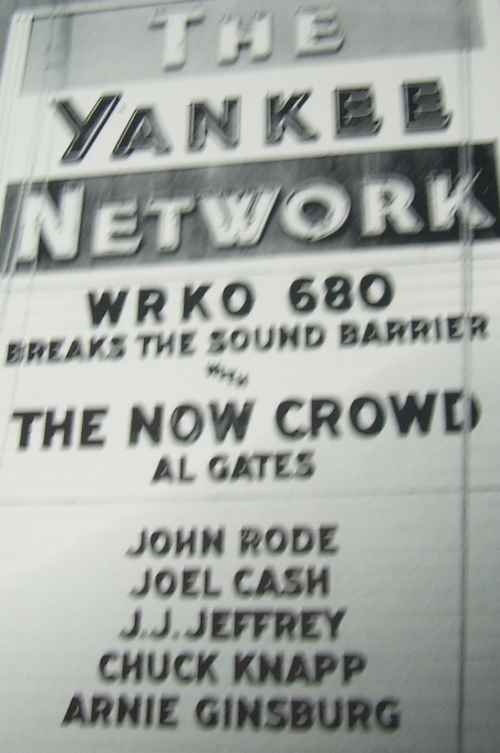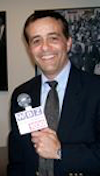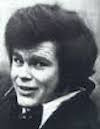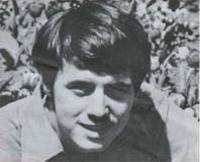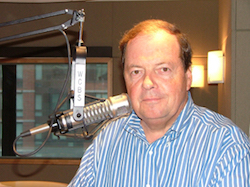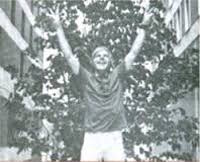


8.8.16
by Rollye James
and
Claude Hall
Claude Hall: “Books about radio and music and radio and music people are spewing forth.
Some of them are fairly decent … written most of the time to set the record straight in their
own behalf. Others are written, obviously, for the profit involved, though only a few reach a
profit picture. 'George and Me' had two major purposes: First, to establish a niche in radio
history for a good radio man – George Wilson – who just happened to also be a good friend.
Second, obviously, to set the record straight for myself
“I’m 83. I didn’t think I’d be able to finish ‘George and Me’. I meandered through two
'significant moments', as a doctor put it, during its writing. Five days in a hospital. I’ve got a
strong heart, but a bad valve that can’t be replaced. Just a matter of time.
And, dammit, I’d like a couple of more years. Not that it really matters, I suppose. Two
friends deserve books and I’m not sure, even if I had the time, to do them … that I could do
these friends real justice with books. The reason? I no longer have the writing skills and/or
research skills that I hope I previously had. Those men are Bill Randle, once of fame at
WERE in Cleveland, and Don Graham, a veteran record promotion man. Graham is in his
80s and still going strong. Randle passed on a few years ago. Jim LaBarbara devoted a
chapter to him in his book a couple of years ago. I’ve written about him extensively in this
column and mentioned him in a couple of quasi-fictional books.. And there’s a lady who
deserves a book. Without question. Ruth Meyer who worked for Todd Storz, one of the
fathers of the Top 40 format with Gordon McLendon, and programmed for a while WMCA in
New York City as a Top 40 station. Bill Stewart, a program director who worked with both
Todd Storz and Gordon McLendon, may deserve a book. His daughter had his artifacts; she
was going to do a book. It hasn’t yet appeared and more than likely won’t. The years have
grown long.
“Books keep you ‘visible’ longer. They are, in essence, our ‘pyramids’ that tell those yet to
come that we were indeed here and indeed played a role in the growth and development of
humanity. They find their way into university libraries, storehouse of knowledge.
“To my knowledge, there’s only one person around at the moment – of whom I’m aware –
capable of a book of merit about Bill Randle and/or Don Graham. That’s Dr. Robert
Weisbuch who has written a book about radio personality Lee Baby Simms and is currently
putting the finishing touches on a third revision of that book, ‘Hitbound’. Another writer
comes to mind. Joe Nick Patowski who makes his home in deep central Texas. Dr. Weisbuch
is head of a consulting firm that advises colleges and universities; he obviously hasn’t the time
or inclination to do a book about Bill Randle, even though he’s an avid radio buff. A book
about Don Graham would require, in my opinion, insider knowledge and countless interviews
with not only the recording artists he has helped to fame and fortune, but close associates in the
record industry.
“So, we can assume that these books will not be written. Certainly, not in our time. In years to
come, some scholar may attempt such feats. Maybe. I could pose the question: Why not just
tribute by the National Association of Broadcasters now? They have honored some radio
personalities that, honestly, didn’t quite live up to the honor. They were – or are -- only
temporarily famous; in years to come that award is about all for which they will be known.
Don Graham and Bill Randle, in my opinion, deserve just and fair tribute. Randle was the
fountainhead for the Top 40 format, according to an in-depth interview with Bill Stewart
printed in 'This Business of Radio Programming' that I wrote with my wife Barbara, published
in 1977. Don Graham has been an important form of glue that binds -- or has bound -- radio
and music.
“I love radio. Without question, radio transported me from the fantasy of West Texas, to
reality. Radio provided me reason to believe there was something better than working 60 hours
a week in a feedmill in Winters, Texas. To dream. The fuel of my dreams was fostered, to a
great extent, by KVOO in Tulsa. And, somehow, by Slim Willet’s ‘Don’t Let the Stars Get in
Your Eyes’ (he worked as a personality on a radio station in Abilene, Texas). What would I
have become without radio and the personalities that played the records? How well I recall
Eddie Hill on WSM, Nashville, and John R. God bless radio! And God bless Don Graham
and Bill Randle.”
Frank Boyle (on WPOP and Hartford Radio): “I don't know all eras there--but Joey Reynolds
and early "Greaseman" did great there-- Dick Robinson at WRCH gave Bob a hell of a fight.
You're right- everybody ran No 2 to Bob Steele.”
Rollye: When facing a competitor who clearly would be number one no matter what you did,
was it frustrating or freeing? Fortunately for programmers, the situation didn’t manifest
often— but when it did, the best approach may well have been to concede. That’s what usually
happened in Minneapolis, by far the best example of this dilemma. WCCO owned the Twin
Cities. It’s personalities measured tenure in decades not years. When Steve Cannon joined in
1971, he was “the new guy”. He’d stay for over a quarter of a century before retiring in 1997,
but for most of that tenure, he remained “the new guy”. A statistic I’d always heard (but never
verified) was that in the 1960s, it was still the case that more people listened to WCCO radio
than watched Minneapolis TV. Undoubtedly it was where the market turned when anything of
consequence occurred.
So the overall battle really became who would be number two. Or, by the ‘70s, how to be
number one in at least something. Or avoiding the issue altogether by inventing a new
numeral. That’s what KSTP did when it proclaimed itself number “twone”. They explained it
as being #1 or 2 in 18-34— comparing themselves to station “CC”. But the ad graphically
illustrates that because WCCO was in a world of its own, number two was meaningless for the
rest of the crowd. They needed something bigger than 2. They need “twone”.
WCCO’s 1A clear status gave it some of the best coverage in the country, but KSTP, a 1B
clear, was no slouch. More often competitive battles were at the other end of the spectrum—
what to do when you couldn’t blanket your metro? The creativity award there had to go to
Baltimore’s WITH, which had no choice to admit it didn’t cover much. They got around that
deficiency in the 1950s by proclaiming their lousy signal as a benefit. They had “pin point
power”. Advertisers no longer had to pay for wasted coverage when they could directly home
in on their prospects.
That 1957 full page ad (in Sponsor Magazine) came a few years after WITH ran a print
campaign in Sponsor explaining that Baltimre was different— nobody lived in the suburbs (a
claim noteworthy to all of those who did, but never mind facts)
1954
For other stations, it was the lack of funds that made it tough. Many years ago, Ron
Chapman, while he was king of Dallas radio on KVIL, regaled me with stories of the station’s
pre-Fairbanks days. Bottom line: things were tough but he was creative. One of my favorite
tales was about their billboards.
KVIL couldn’t afford many, so they made themselves look bigger to the public by buying
rotators. (The bulk of billboards are sold annually, but a few boards rotate in 13 week runs.
Businesses that can’t commit to a year, can buy a board for a quarter. But it is no secret which
boards rotate. And in Dallas back then, it was no secret KVIL was buying them.)
By 1975, KVIL was gaining ground, but still behind KNUS, which seemingly had unlimited
funds. Knowing that KVIL would rely on rotating boards, KNUS cleverly bought the slot
directly before and after every rotator. It looked like KVIL would be toast.
Mulling over his options, it appeared to Chapman that there weren’t any. And losing one
location really bothered him— a particularly high traffic area on the Stemmons Freeway. He
could still buy it, but KNUS would have the last word. Drivers speeding by would see his
smiling face directly followed by a plug for his competition. He was stumped.
Reviewing every possible play, it hit him. Chapman bought the Stemmons board. But instead
of his smiling mug facing forward, there were several characters looking back, pointing toward
the upcoming KNUS visual. The slogan was uncomplicated: Look who’s still behind KVIL.
I suspect Ken Dowe might have more to say on that story, and I’d love to hear it. I’d also love
to hear from you: info@voxjox.org. Speaking of which, Thanks! Don Graham for writing.
Don Graham: “We are thrilled to see “Dandy Don’s Homemade Ice Cream” featured in the
forthcoming L.A. Times Taste Event 9/2-9/4… Paramount Pictures Studios”
Rollye: Having broadcast from numerous food events— “A Taste of Colorado,” “A Bite Of
Seattle,” and “Scrapplefest” (only in Philadelphia) come to mind, I thought I knew what these
events entailed. Usually tons of food at low or no cost, various vendors— your basic street
fare. Not this one. OK, so it’s at a primo location— Paramount Studios. And it’s sponsored
by the venerable LA Times but even so, I was not expecting the prices.
The $300 pass for the three day event is already sold out, bargain that it is. Opening night is
$150. I must be really out of touch. I figured they missed a decimal point. Or two. But
apparently this taste appeals to the tastes of the affluent. The least expensive event is the $100
block party. Dandy Don’s ice cream will be in very nice company. Tickets include full
nibbling privileges. Now, for something much more affordable, take a trip in time back to
1973:
Poster for 1st annual Willie Nelson 4th of July Picnic - 1973
Woody Roberts: “These photos are relative to the Country Music Hall of Fame's decision to
honor Armadillo World Headquarters with its own exhibit room in 2017. They feel the 'Dillo
was instrumental (pun intended) in the establishment of progressive country/outlaw country
music. It was Armadillo Productions that 1973 contacted me to "save" the first Willie Nelson
4th of July Picnic, two weeks out and no ticket sales.
“A year before, their Dripping Springs site hosted a county music festival where Willie and
many of the same artists had performed and was a financial disaster. For this festival, Willie
himself had invested. He hired Armadillo to produced the event. That first Picnic was a truly
wild wild west affair and it also was a genuine family picnic; nothing like the organized
"Picnics" of today. The national media depicting Texas rednecks and hippies celebrating their
independence first brought Willie's name to the attention of the youth and counter culture.
“Two months later, KLRN TV and Armadillo Productions with me consulting produced a 1973
pilot for KLRN's 1974 PBS pilot of Austin City Limits for which I was also a consultant. That
pilot launched the longest running music show on television.
Billy Joe Shaver is the tall guy.
Willie Nelson, Sammi Smith & Coach Darrell Royal at the first Willie Nelson Picnic
(and that's Leon Russell in the background)
Woody Roberts: “The photo of Willie with Billy Joe Shaver was taken during a break at the
AWHQ taping of the pilot for the pilot of ACL. The other picture was snapped on stage at the
first Picnic. Poster art is by Jim Franklin. For the heck of it I attached the Picnic commercial
I created that was produced by Gordie Ham at then progressive rocker KEXL FM in San
Antonio. I took their budget away from AM country radio and backloaded my ads on AM Top
40 and FM rock.”
Woody Roberts (to Claude): You mentioned doing a story about a deejay named Woody. I
believe I was the first to use Woody on the radio, when I became Woody. Woody Allen was
not yet popular as a stand-up. I took Woody from Woody Guthrie because as a young boy I
was much influenced by reading his Bound for Glory and used to sing "This Land is Your
Land" and I still think it should be our national anthem; so the kids I hung out with gave me
the nickname Woody. There have been two other uses of Woody Roberts since I left radio.
For awhile San Antonio radio even had a Woody Robertson. I grabbed WoodyRoberts@gmail
and woodyroberts.com so no one else would take them.”
Rollye: As I was finished this column, I heard from David Gleason. He’d been on my mind
as the wonderful KSTP and WITH ads above came directly from the pages of
AmericanRadioHistory.com. I knew what I wanted to find, but now it’s so easy to find it,
thanks to his terrific site. David is also a denizen of various radio message boards online, and
his contributions always uplift the quality (and usually my spirits). He let me know there was
a post on the New York Radio Message Board (Alan Sniffen’s site at nyrmb.com) quoting an
unattributed article from 50 years ago, printed in the July 2, 1966 issue of Billboard:
WOR-FM's Problem -- WOR-FM stereo in New York launches its Hot 100 format July 30, and
will become immediately a station with a programming problem. For the station would like to
play the hit records while they're still hits… even expose new product. But the station faces the
problem of being a singles station without the singles. At the present time, stereo product is
available only in albums, tape, or tape cartridges and these, with few exceptions in the rock 'n'
roll field come only after a hit single record has paved the way. Obviously the station will need
help from the record industry. Nearly all product is recorded in stereo today. Perhaps record
companies should take it upon themselves to supply the fledgling station which has one of the
largest FM potential audiences in the nation's major radio-record market, with stereo tapes of
their single releases much as record companies now supply free records to major stations.
WIFI-FM (92.5), a Philadelphia stereo station, has been programming rock 'n' roll seven
nights a week, but only the occasional album cuts have been in stereo. If other FM stereo
stations follow WOR-FM's lead in programming Hit 100 records, the record industry will lose
valuable exposure unless it pitches in and helps out with usable 'fresh' programming material.
Rollye: David noted that the post was prefaced with ‘this was probably written by Claude Hall
who carried on a long and ultimately successful crusade for servicing stations with stereo
product.’ —I think you can count on it. Claude?
Mel Phillips: “We should have good news about a reunion party venue soon. We've started
negotiations to book a larger location and hope to have an announcement to make before the
end of the month. Joan Greenberg who does such an outstanding job with the Massachusetts
Broadcasters Hall Of Fame and assisted previously in the running of the late Len Zola's Media
Gang luncheons, is helping us secure the venue. I feel very fortunate to have Joan's expertise.
There are still some rooms left at the Crowne Plaza (Newton) (at $179 a night) if you haven't
made your reservations yet. To book your "WRKO Reunion" room, call the hotel at
617-969-3010. If you run into any problems with the booking, ask for Candy in the sales
office. We continue our A to Z (on-air name) photos (Part 2) of the WRKO jocks during the
Top 40 era.
R: John Rode
P: Palmer Payne R: Mark Rivers
R: Jordan Rich S: Shadoe Stevens
W: Ed Walsh W: Johnny Williams
WRKO 50th Anniversary Reunion
The Weekend of June 2, 2017.
A Friday night party for all WRKO employees past and present. (Venue TBD.)
On Air: Saturday Night 7-11 pm (On-Air lineup TBD) on WRKO-AM and online through
Backbone Network Streaming (produced by George Capalbo Jr.)
